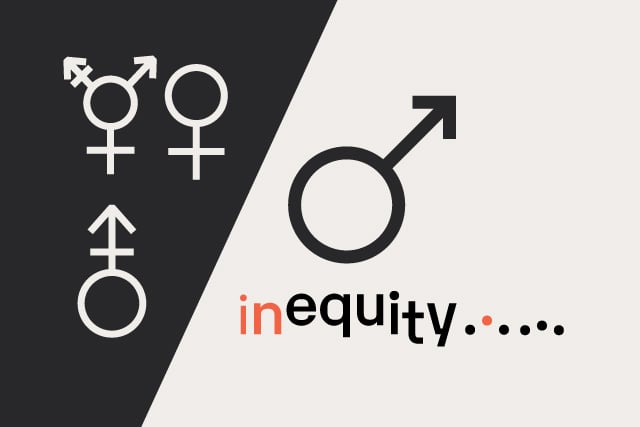Looking back at the past six years that I have been working on the Ektron CMS platform, there are many things I know now that I wish I would've known back then. Here are the top five things I wish I would've know six years ago.
I have been working with the Ektron CMS platform since late 2007, starting with version 7.5. Over the last six years, I have been an Ektron client, an Ektron employee, and I now work for the best (in my opinion) Ektron partner in the business, WSOL.
After six years, I like to think that I am becoming what’s known in the industry as an experienced developer. However, when I go back and look at something that I worked on a while ago, I almost always end up saying to myself, “Who was the idiot that wrote that? Oh, yeah, it was me.” (I suspect future me will continue saying that a lot.)
Here are the top five things that I wish I had known about the Ektron platform earlier.
1. Smart Forms
Boy, how I wish I had understood the concept of structured data earlier than I did. These little babies would have saved me a metric ton of grief and hardship later on. Being able to create a consistent look and feel for certain types of content makes things easier for CMS users and allows for the creation of content without having to struggle with HTML code or WYSIWYG editors. By separating form from content, smart forms add a great deal of functionality to any Ektron site.
They are even better now that we can pretty easily create a data class from the smart forms to use in our code. Check out the Old Tricks - XSLT files and Smart Forms for more information.
2. XSLTs
The promise of having a standard data format, XML, that can be transformed on the fly into whatever structure is needed at the time is very attractive. I think this is why Ektron uses XML to store smart form data. Ektron uses XSLTs (Extensible Stylesheet Language Transformations) to convert this data into HTML format so it is viewable in a web page, and when configured correctly, they become tools that provide a number of robust options for making sure the data stored in the CMS is displayed optimally. XSLTs were really the structural foundation of a good Ektron site back in the day. In fact, they still are today, even though they are losing some of their shine. Understanding how XSLTs work, and some of the things you can do with them, will never be a waste of time for a good developer.
3. Community
Have you ever gone into a room full of people who all seem really, really smart, with a deep rooted feeling that you are a fraud? Yeah, me too. But I want to let you in on a secret: everyone feels that way. The thing is, as part of a community, we all feel it together.
There are a lot of really smart and talented people working with Ektron who are willing to help you. Being part of the community means that you get to ask them questions and get real-world, workable answers.
The forums are great, but when you combine them with the power of Social Media, something special happens. A lot of those really smart people I mentioned earlier are also very active on Twitter. If you ask a question on Twitter, you’ll probably get an answer. I’m always amazed at the responses I get when I post something on the forums, then tweet about them as well.
4. The APIs
Raise your hand if you’ve sat through one of Ektron’s sales presentations. I remember when I did, and I was amazed at how easy the sales people made working with Ektron look. You put these Ektron controls on the page, and, like magic, they pulled data from the CMS. They even came with built in XSLTs to format the output, so I didn’t have to worry about that.
But I quickly discovered that those controls didn't always do exactly what I needed. That’s when I discovered the APIs (Application Programming Interfaces). Anything the XSLTs can do can also be done through the APIs, with more control. The power of the APIs is what makes Ektron so flexible and such a powerful platform.
With version 8.0, Ektron introduced the Framework APIs, with a full release in version 8.5. The new APIs have the same power, but they use a simpler, more consistent interface, which has made the process of building custom functionality that integrates with the CMS so much easier.
5. It’s just ASP.Net
There is no secret version of .Net that Ektron uses. There isn’t any magic involved (although I suspect a lot of prayer goes into every stage of development), but when you get right down to the nuts and bolts of it, it’s just ASP.Net. This means that anyone with knowledge of ASP.Net can dig into the underlying structure of the site they are building to determine how it works, rather than having to rely on Ektron for all the answers. It’s not as hard as it looks!
So there are the five things that I wish I had learned earlier. I am a better developer now than when I started working with Ektron. I am lucky enough to work with one of the most talented teams in the industry. But one thing that I have really learned over the years is that there is so much more for me to learn.
Do you have any Ektron tips of your own? Is there anything you’ve learned while working with Ektron that you wish you knew earlier? Please let us know in the comments, or contact us if you have any development questions for your Ektron website.
Related Posts

Establishing Equitable Management Practices
It's International Women's Day and Dennis Kardys shares some things we’ve done at Diagram to be mindful of bias and take steps to embrace diversity.

4 Ways to Avoid Disaster When Migrating CMS Platforms
If you have ever migrated from one content management system (CMS) or eCommerce platform to another, you know how many unexpected issues can occur during the migration process.
Results Matter.
We design creative digital solutions that grow your business, strengthen your brand and engage your audience. Our team blends creativity with insights, analytics and technology to deliver beauty, function, accessibility and most of all, ROI. Do you have a project you want to discuss?
Like what you read?
Subscribe to our blog "Diagram Views" for the latest trends in web design, inbound marketing and mobile strategy.

